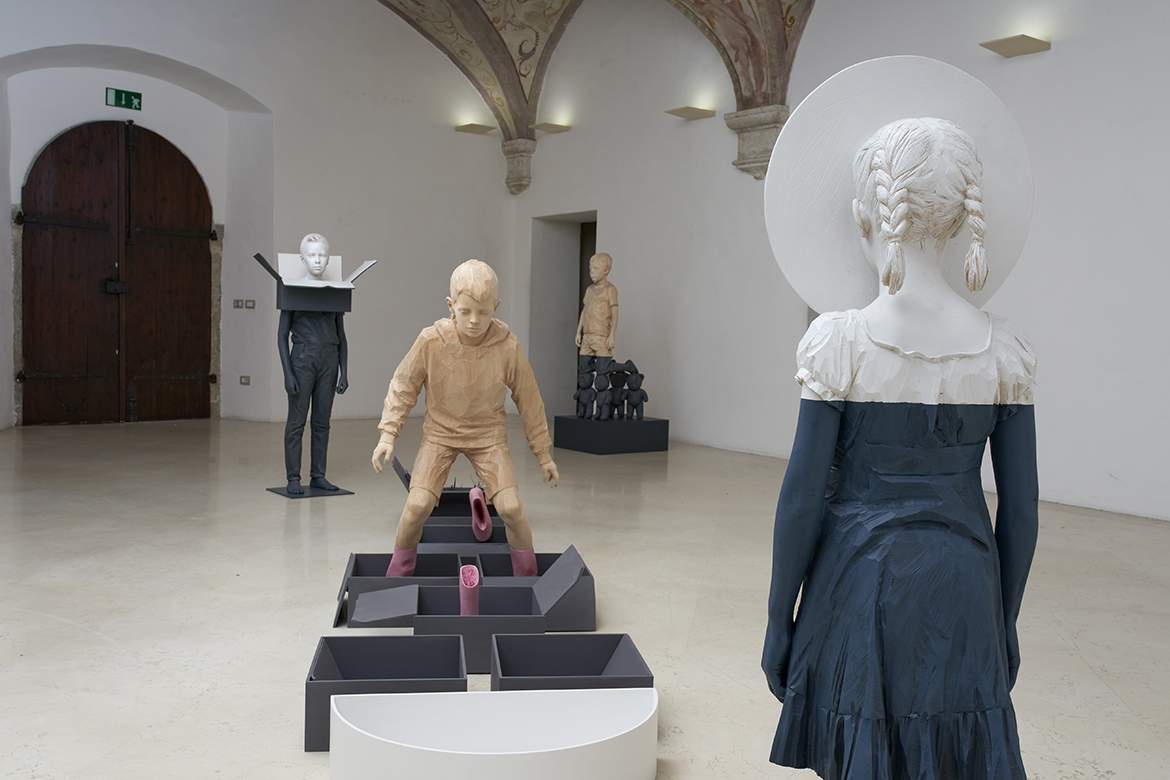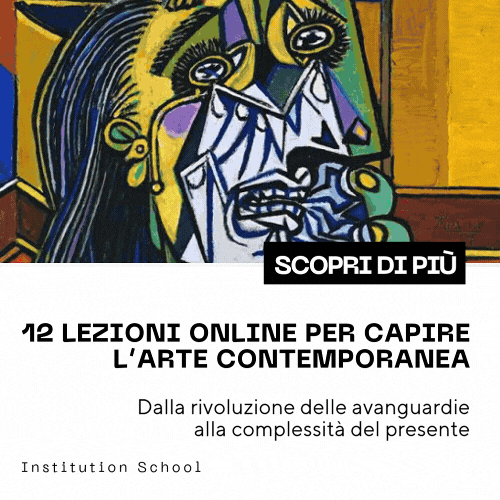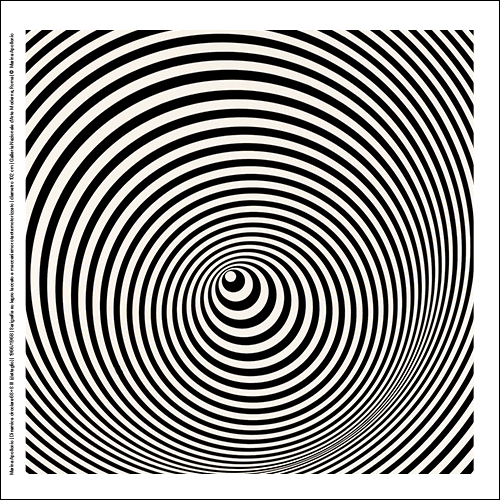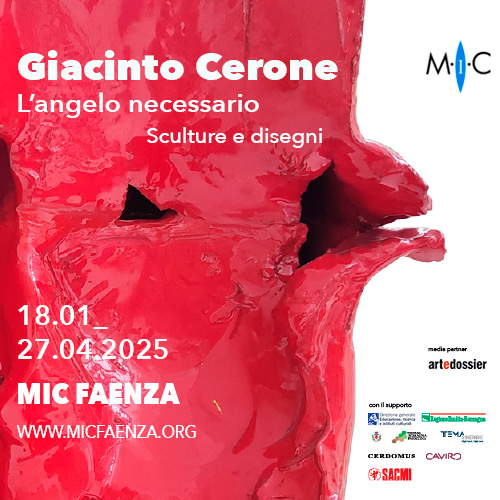Museums close, but galleries don't: here are some must-see exhibitions in full swing
Not all art in Italy has closed: in fact, the government has closed museums and exhibitions, but churches have remained open (even in red zones), and galleries have remained open (in yellow and orange zones, but not in red zones), as commercial activities with Ateco code 47.78.31, “Retail sale of art objects (including art galleries).” Gallery exhibitions can therefore be safely visited, and perhaps it is an opportunity to discover artists you had not heard of and begin to familiarize yourself with the world of art galleries. So here are some exhibitions that remain open in these days when more and more businesses and venues are closing.
In Trento, Studio d’Arte Raffaelli is offering, from October 15, 2020 to February 28, 2021, a solo exhibition of one of Italy’s most important wood sculptors, the South Tyrolean Willy Verginer, entitled Rayuela, curated by Luca Beatrice. For his solo show, the Gardena artist presents a new series of works whose theme revolves around the “game of the world,” present in all cultures and a paradigm of life itself. Beginning with Julio Cortazar’s cult book of the same name, Rayuela precisely, Verginer’s work unfolds through a sculptural journey in which the main protagonist is the wooden material, worked with expert craftsmanship and painted according to the symbolic density of color.
In Bolzano, a double solo exhibition by Sissa Micheli and Jürgen Klauke entitled Scenography of existence, curated by Günter Oberhollenzer, is on view from Oct. 10 to Dec. 12, 2020, at Galleria Alessandra Casciaro. Both artists prefer photography and film as their means of expression, but even in terms of content, a number of points of contact can be discovered: the staging and aestheticization of human existence and its identity, the play with presence and absence, with materiality and sensuality, the taste for extravagant and surreal, mysterious and witty things and situations. The exhibition displays an important body of work by the two artists.
In Verona, at Studio La Città, the group exhibition La Musée 2, which brings together sixteen artists (thirteen women and three men), is on view from October 13, 2020 to November 21, 2020. The brainchild of Azad Asifovich, the exhibition aims to reverse a condition shared by many museum collections, composed of 80 percent male artists and only 20 percent female artists. Here the proportion is deliberately reversed, in an effort to disrupt the current system of art and culture in which traditional artistic values and models are attributed to men. On view are works by Sylvie Auvray, Joseph Beuys, Gianni Caravaggio, Anne Deguelle, Helen Frankenthaler, Muriel Gallardo Weinstein, Anna Galtarossa, Ghazel, Francesca Grilli, Sofie Muller, Lulu Nuti, Kiki Smith, Tracey Snelling, Ettore Spalletti, Jessica Stockholder, and Hema Upadhyay.
Still in Verona, from November 6, 2020 to December 12, 2020 Kromya Art Gallery is dedicating an anthological exhibition to Giorgio Griffa, entitled Giorgio Griffa. Years ’70-2000 and curated by Matteo Galbiati, with an itinerary that includes some 20 paintings, on canvas and on paper, as evidence of the different pictorial cycles that, without following one another, intertwine and overlap accentuating the a-temporality of Giorgio Griffa’s pictorial dictate. “A Turinese voice of the analytical season of Italian painting,” writes art critic Matteo Galbiati, “and a leading representative of the trend that at the end of the 1960s engaged some young people of the time in reflecting on the themes intrinsic precisely to the language of painting, Griffa has, like the other artists of his generation who have moved in this direction, affirmed a highly original expressive code based on a corollary of primary signs-gestures, but also symbols and codes, which leave the pictorial writing suspended in the void of the raw canvas.”
In Rome, Gagosian presents, from Oct. 31 to Dec. 12, Katharina Grosse ’s solo exhibition entitled Separatrix: it is her first solo show in Rome and for the occasion the painter brings new paintings and works on paper to Gagosian. Grosse transposes events that happen as she paints, entrusting spaces and surfaces to chance. The artist characterizes the gesture as a propulsive sign of her personal technique both in the impressive site-specific paintings, where she uses an airbrush to spray pure color on objects, rooms, buildings and even entire landscapes, and in works on canvas, paper and sculpture.
Also in Rome, Francesca Antonini Arte is organizing, from Oct. 22, 2020 to Jan. 9, 2021, the exhibition Anche Bach mi ha salvato, a solo show by Antonello Viola: an exhibition where papers and a work, Ricordi Isola di Palmarola, 2005-2010, a large painting on glass composed of four plates painted in oil on both sides, applied on a wall shelf and arranged next to each other with overlapping edges, are on display. A series of works intended to talk about time.
And back in the capital, Triphè Gallery is hosting from Sept. 29 to Dec. 30, 2020, the solo exhibition of the very young Federica Zianni (born 1993) entitled Nature morte and curated by Maria Laura Perilli. The artist’s work investigates in a totalizing form the human soul and its nature, and all her works intend to investigate all the characters of the individual: “man,” writes the curator, “instinctively tends to think of the idea of an existence made of abundance and positivity, to which everyone aspires, but this is not always the case. Life tests one’s self, which, after emerging from its cocoon, tries to adapt to the unexpected events of the world.” And it is on these aspects that Federica Zianni’s work focuses.
In Salerno, the Paola Verrengia Gallery is hosting from Oct. 24 to Dec. 12, 2020 the group show A moment of reflection, curated by Antonello Tolve: the exhibition aims to be an opportunity to reconsider the places of everyday life through the work of five Italian artists: Filippo Centenari, Emanuela Fiorelli, Federica Luzzi, Marina Paris, and Paolo Radi. In dialogue with the gallery spaces and thus with the space understood as a convivial area, the chosen works point to a common path, a research that focuses on the exclusivity of Italian art and at the same time aims to build a visual (emotional) atmosphere made up of works that dialogue with the space to make themselves space and weave the allegorical foundations of a new, happy social horizon.
Pictured: a photo of Willy Verginer’s Rayuela exhibition at Studio d’Arte Raffaelli in Trento.
 |
| Museums close, but galleries don't: here are some must-see exhibitions in full swing |
Warning: the translation into English of the original Italian article was created using automatic tools. We undertake to review all articles, but we do not guarantee the total absence of inaccuracies in the translation due to the program. You can find the original by clicking on the ITA button. If you find any mistake,please contact us.





























